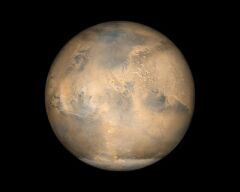지구는 자신의 축을 중심으로 회전한다. 만일 지구가 완전한 형태의 구형이고 지구 내면의 구성물이 완전히 대칭 상태에 있으며 매우 단단하다거나 또는 지구가 우주에 있는 유일한 존재라면, 불변의 회전축을 중심으로 영원히 회전할 것이다. 그러나 이 모든 조건은 사실과는 다르며, 실제로 지구는 동요한다. 이전에도 3회의 동요가 있었던 것으로 알려졌으며, 올해 7월 4번째의 동요가 발견되어 공표되었다.
밤하늘의 별들의 움직임을 자세히 관찰해보면, 지구의 북극 바로 위에 위치하는 어떤 지점을 중심으로 하여 원을 그리며 움직인다는 것을 알 수 있다.(북극성이 그 근처에 있으나 바로 그 지점에 위치하지는 않는다) 별들을 수년에 걸쳐 관찰해보면 그 중심점이 서서히 움직이고 있음을 알 수 있다. 이러한 현상은 지구의 회전축이 움직이기 때문이며, 이는 지구가 완전한 구형이 아니고 적도부분이 튀어 나와 있기 때문이다. 달과 태양이 이 튀어나온 부분을 끌어 당김으로써 지축이 천천히 원을 그리며 움직이게 되는 것이다. 지구가 이원을 한바퀴 도는데 약 2만6천년이 걸린다. 이러한 현상을 '세차(歲差)운동'이라고 부르며, 분점(分點)이 올해 보통 그런것보다 좀 더 일찍 오는것은 이 때문이다.
이것이 지구의 회전축의 진동중 제일 큰것으로서 고대 그리스인에 의해 발견되었다. 지축은 완전한 원형을 그리며 움직이지는 않는다. 달이 지구에 보다 가까울 때가 있기 때문에 달의 장력은 조금씩 다르며 따라서 세차운동에 작은 진동이 생기는 것이다. 이 미동은 19년을 주기로 반복된다. 이러한 현상은 1748년 영국의 천문학자 '제임스 브래들리'가 별의 위치에 대하여 세밀히 관찰한 결과 발견한 것이다. 이 미동은 장동(章動)이라고 부르는데 이는 '끄덕이다'라는 말의 라틴어에서 비롯된 것으로 축이 세차운동을 할때 마치 조금씩 끄덕거리는 것 처럼 여겨졌기 때문이다.
또한 1765년에는 스위스의 수학자 '레온하르트율러'가 지축은 1년에 걸쳐 작은 원을 그리며 움직이는 것이라고 주장하였다. 당시로서는 그 움직임은 측정하기에는 너무 작은 것이었으나 수십년이 지난후 망원경과 다른 계측기기들이 보다 정밀해졌다.
마지막으로 1892년 미국의 천문학자 '세드챈들러'가 천체에 대한 정밀관측으로 지축의 위치에 의해 가장 잘 설명될수 있는 현상인 별의 미세한 위치변동을 탐지할 수 있었다. 이것은 '챈들러 진동'이라고 불리워졌다. 챈들러 진동은 지축의 움직임이 원의 형태를 이루나 정확한 원은 아니며 일 회전에 약 4백30일이 소요되고 때때로 좀 더 넓어지는 경향이 있으며 소규모의 진동으로서 지축의 위치변화는 1년에 10야드 남짓이라고 설명한다. 따라서 이는 탐지해낼만큼 충분히 큰 진동은 아니라 생각되며, 이러한 사실이 측정될수 있다는 것은 천문학적 계기들이 매우 정밀해졌음을 말해준다.
만일 이것이 '율러'가 주장한 진동과 동일한것이라면, 어느 정도 기간이 지난후 사라져야만 하는데 실은 그렇지가 않다. 그것은 계속 되고 있는 것이다. 천문학자들은 이를 지구내의 물질의 분포가 때때로 변하기 때문이라고 설명한다. 이것은 흔히 지구 내부의 용암의 균형을 바꿀 정도의 지진으로 생기는 것이다. 즉 많지는 않으나 지축을 몇야드 흔들리게 하기에는 충분한 것이다.
그러나 이러한 지구의 진동을 일으키는 것이 지진만은 아니다. 아주 작더라도 지구 질량의 분포에 어떤 변화가 생기면 진동이 발생한다고 1862년 영국의 과학자 '켈빈'경이 주장하였다. 물론 변화가 작을수록, 진동도 작을것이다.
달이나 인공위성의 위치변화를 탐지하는 방법이 발전을 거듭해 왔다. 측정하려는 물체에 레이저 광선을 쏘아 되돌아오는데 걸리는 시간을 측정하여 몇인치의 매우 작은 위치의 변화도 탐지해 낼 수 있다. 이러한 방식의 사용으로, 캘리포니아 파사데나에 있는 제트추진 연구소의 과학자들과 미사츄세츠 캠브리지에 있는 대기 환경 연구소의 과학자들은 2주내지 2~3개월 동안 지축이 작은 원을 그리며 움직일 것이라는 제4차 진동을 발표하였다. 원의 크기는 2인치반에서 2피트 정도의 것이며 챈들러 진동의 30분의 1정도의 크기이다.
기상자료에 대한 인공위성의 보고를 면밀히 조사해본 결과 이러한 단기의 제4차 미동은 바람에 의해 대기가 전후로 흔들릴때 지구질량의 분포에 변화가 생겨서 발생한 것으로 결론지었다. 이에 덧붙여 폭풍에 의하여 바닷물이 움직인다든가 지각 부분의 눈이 증감하는 등의 요인을 들수 있다.
폭풍이나 강의 흐름, 눈이 녹는것 같은 우리에게 매우 익숙한 현상들이 광막한 지구에 미동을 야기시킬 수 있다는 것을 생각해보면 놀라운 일이다. 그러나 이는 명백한 사실인 것이다.
The Earth spins on its axis. If it were a perfect sphere in shape, perfectly symmetrical in its internal makeup, perfectly rigid and perfectly alone in space, it would spin eternally about an immovable axis. None of this is true, however, so Earth wobbles. Three different wobbles were known prior to this year. In July, a fourth wobble was discovered and announced.
When the motions of the stars during the night are closely studied, they are found to make circle about a certain point in the sky that is just over Earth's North Pole.(The North Star is near that point but not exactly on it.) If the stars are studied year after year, that central point can be seen to shift slowly. It does so because Earth's axis shifts, and that is because the Earth is not a perfect sphere but bulges at the Equator.
The moon and sun pull at that bulge and cause the Earth's axis to move in a slow circle. The circle is completed in about 26,000 years. This effect is called "the precession of the equinoxes," because, as a result of the motion, the equinoxes arrive a little earlier each year than they would ordinarily. This is the largest wobble of Earth's axis and was discovered by the ancient Greeks.
The Earth's axis does not describe a perfect circle as it moves. The moon's pull changes slightly with time because it is sometimes a bit closer to Earth than at other times. This produces a minor wobble in the circle of the precession, a tiny wave that repeats itself every 19 years.
This was discovered in 1748 by a British astronomer, James Bradley, from his careful study of the position of the stars. This slight wavy motion is called "nutation," from the Latin word for "nodding," because the axis seems to nod slightly as it marks out the circle of the precession of the equinoxes.
But this is not all. As early as 1765, a Swiss mathematician, Leonard Euler, predicted that Earth's poles ought to move in tiny circles over about a one-year period. The motion was too small for anyone to detect at the time, but as the decades passed, telescope and other instruments became more precise and delicate.
Finally, in 1892, an American astronomer, Seth C. Chandler, was able to study the stars so accurately that he could detect very tiny shifts in their position that could best be explained by the shifting of the position of the Earth's poles. This was called the "Chandler wobble."
The Chandler wobble is a roughly circular movement of the poles. The circle is completed in about 430 days. It is not an exact circle but tends to be wider some years than others. It is a tiny wobble and the poles' change in position in the course of a year is only about 10 yards or so. You wouldn't think this would be large enough to detect; the fact that it was detected shows how refined astronomical instruments have become.
If this were the motion that Euler had predicted, it ought to fade out after a whole, but it doesn't. It keeps right on going. Astronomers believe this is because the distribution of matter in the Earth changes from time to time. Usually, this is a result of a large earthquake, which shifts the balance of rocks inside the Earth- not much, but just enough to put a kink in Earth rotation that slowly shifts the pole a few yards. Naturally, the more severe the earthquake, the larger the deviation, which is why the Chandler wobble is larger some years than others.
But it doesn't take an earthquake to make the Earth wobble. Any shift in Earth's mass distribution, even a tiny one, will produce wobbles, as the British scientist, Lord Kelvin, predicted in 1862. The smaller the shift, of course, the smaller the wobble.
Methods for detecting changes in position of the moon or of artificial satellites have continued to improve. Laser beams can now be bounced off such bodies and by measuring the time it takes them to return, changes in position of as little as a couple of inches can be detected. Using such techniques, scientists from the Jet Propulsion Laboratory in Pasadena, Calif., and from Atmospheric and Environmental Research in Cambridge, Mass., announced the existence of a fourth wobble that moves the axis in a small circle in anywhere from two weeks to a couple of months. This circle has a width of two and a half inches to two feet, so that it is only about one-thirtieth as large as the Chandler wobble.
By carefully studying satellite reports on weather data, the scientists have concluded that this short-time, very small fourth wobble is produced by the change in massdistribution when winds cause the atmosphere to slosh back and forth. Other factors might be storms causing the back-and-forth movement of water, the advance and retreat of snow cover, and so on.
It is astonishing to think that phenomena as familiar as guests of winds, of the flowing of rivers, of the melting of snow, can produce a tiny wobble on the vast and massive Earth, but they apparently do.
(c) 1988, Los Angeles Times Syndicate
이 기사의 내용이 궁금하신가요?
기사 전문을 보시려면500(500원)이 필요합니다.
1988년 10월 과학동아 정보
🎓️ 진로 추천
- 천문학
- 지구과학
- 물리학

















